In this article you will learn why creativity is important and how Montessori encourages creative development. By the end of the article, you will have a better understanding of how Montessori classroom areas and Montessori materials promote creativity instead of stifling it, which is a common misconception.
Why creativity is important
Definition of creativity from a dictionary is “the ability or power of an individual to invent, imagine, or create, especially in a constructive way.”
It’s essential for kids to be creative as it helps them express themselves through play, art and storytelling. Creativity also gives them a way of understanding the world by broadening their imagination which has been proven to help with problem-solving skills when they get older.
Creative kids are more likely to exhibit leadership qualities, an entrepreneurial spirit and even success in language skills that will benefit them throughout their education, into their careers, and beyond.
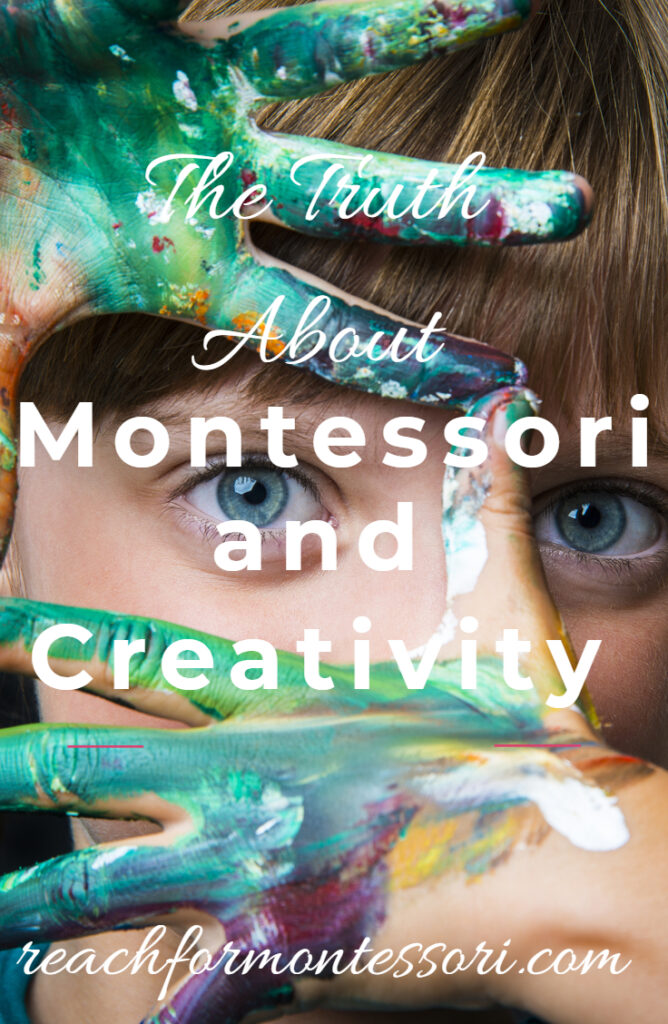
How Montessori promotes creativity
Montessori allows children to explore their curiosities, which is essentially the tarmac for information seeking and creativity/creative problem solving. In Montessori, children are seen as naturally creative and their initiative-driven natures are cultivated to the fullest.
Montessori education is a chance for children to extend their creativity through hands-on, real world experiences. The value in developing creativity through these experiences cannot be understated, as the aim of any education experience should be to prepare a child for real life.
True creativity relies on the ability to problem solve. The ability to problem solve relies on intrinsic motivation. The intrinsic motivation fostered by Montessori promotes a life-long enjoyment of learning, and thereby, creativity.
How, specifically, does Montessori promote creativity though? Let's take a look at some different learning areas in a Montessori environment.
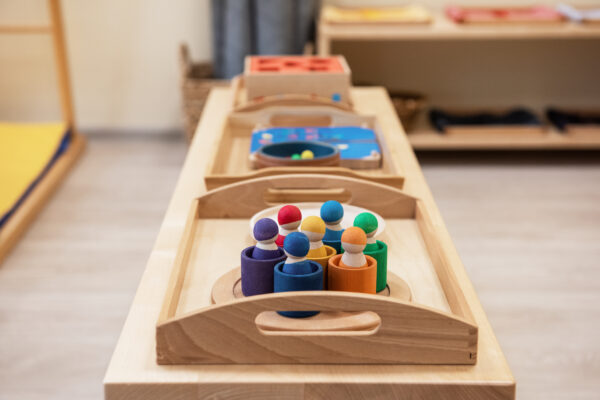
Prepared environment
Montessori classroom and home environments are “prepared environments“. The prepared environment is the cornerstone of the Montessori method.
A look at a photo or a brief glance into a Montessori classroom might give some the impression that Montessori stifles a child's development of creativity.
The neatness and organization of Montessori classrooms is often cited as the reason for this suspicion.
The Montessori classroom environment, however, is the base for creative exploration. And it's not just the arts and crafts areas, either; it's the entire prepared environment.
In Montessori, children are seen as naturally creative and their initiative-driven natures are cultivated to the fullest.
The neatness and organization that is so off-putting to some is actually very useful to young children. In this type of classroom, children can easily see and access the materials they would like to work with, which increases the creative potential of a classroom.
Children in a Montessori learning environment are also free to choose activities that are of own interests. This freedom fosters inspiration and leads to creativity.
In Montessori, everything in a child’s environment should be designed to inspire creativity and build a love of learning. Montessori classrooms and the materials within are designed to appeal to young children.
The care and respect put into the prepared environment is not lost on children. When they first see these child size spaces, they are immediately inspired at the possibilities contained.
In summary, here are the ways in which the prepared environment promotes creativity:
- items are displayed attractively and easy to access
- children are free to choose with what they would like to work
- items in classroom are designed to attract and inspire
Social environment
The classroom atmosphere in Montessori is a social one. Montessori teachers tend to blend into the background and let the classroom's natural social environment flourish.
This act of a guide alone promotes a community atmosphere in Montessori classrooms. Children are allowed navigate, both physically and mentally, through daily work cycles and activities. This requires a great deal of creative thinking.
Children in Montessori collaborate to come up with creative solutions to issues that arise during group activities. Though children can often be seen working with materials on their own, collaborations are not discouraged at all.
Opportunities for leadership also present themselves due to the mixed age group structure of each Montessori class level. The older children get a chance to help younger children with their work.
This requires Montessori children to come up with creative mentoring strategies.
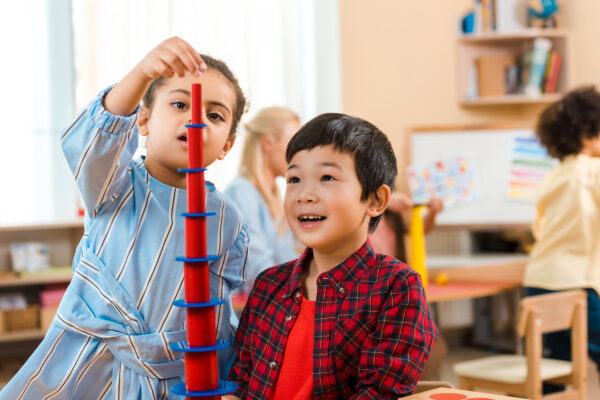
In summary, here are the ways in which the social environment promotes creativity:
- children work in groups to come up with solutions
- children develop creativity through navigation social situations
- creativity is nurtured through natural leadership opportunities provided by mixed age groups
The great outdoors
Maria Montessori very much valued the education and joy that outdoor activity provided for children. She wrote at length, over the span of multiple texts, about the inspiration and importance of nature.
Outdoor learning in Montessori is provided by way of gardening, animal care, sensory exploration, and free play. Creativity through educational experiences abound.
“We do not communicate it [a feeling for nature] by a pedantic description made to a listless and bored child shut up within the walls of a room…”
— Maria Montessori
A child's developing physical skills are not left out of the creativity equation, though. Maria Montessori recognized that a children's small size and physical proportions gave them special gross motor needs.
She respected that young children have inner urges to walk and climb. Letting them following these urges and explore outdoor environment through unstructured play is the Montessori approach to outdoor time.
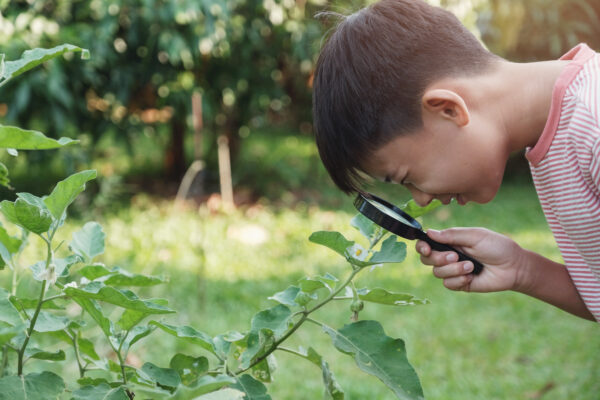
Outdoor exploration is so important in Montessori that elements of the outdoors are even invited into Montessori classrooms by way of nature tables/trays.
In summary, here are the ways in which outdoor time promotes creativity:
- creativity through educational opportunities
- creativity in body movement through unstructured play
- sensory exploration
Creativity through art
Montessori advocates for artistic expression. Art and craft areas in the classroom are stocked with a variety of art materials for children to explore.
Arts and crafts in Montessori are very open-ended and process-based. This is in contrast to a traditional public school classroom, wherein children are often instructed to make prefabricated crafts.
This type of open-endedness is vital to helping children develop creative skills.
Art is beautiful to look at, but any artist will tell you, there's quite a bit of creative problem solving involved in its creation.
The neutral backdrop of a Montessori classroom allows children's' creative art projects to stand out and be appreciated. Art projects are displayed at eye-level, allowing children to better enjoy the end results of their creative process.
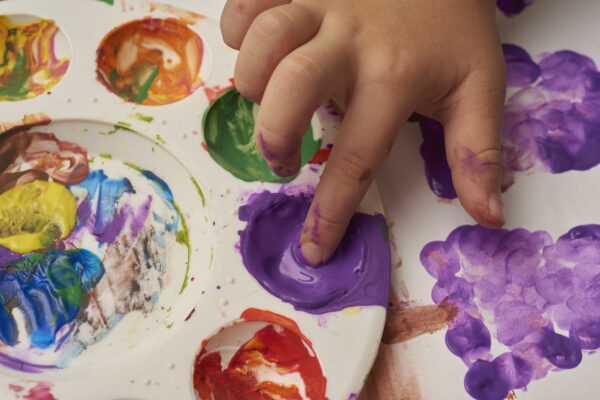
In summary, here are the ways in which art promotes creativity:
- open-ended and process based to encourage creative problem solving
- variety of materials for exploration
- end results kept at eye level
Creativity through Montessori materials
The different Montessori areas are not the only sources of creativity in a Montessori classroom. Montessori materials themselves offer a great deal of creative potential.
Montessori materials are great for promoting creativity because they are designed for children to explore and engage with on the child's own terms. Montessori materials have a built in control of error, which allows children to work without adult intervention.
Montessori materials are specifically designed to be handled by children; small and easy to grasp. Items that are easy for small children to manipulate can be used by them in more, and in more creative, ways.
Also, many Montessori materials are uniform in size, allowing for children to use them together in creative ways. One example of this is in the photo below.
In summary, Montessori materials encourage creativity in the following ways:
- control of error allows children to work independently
- small size of the materials allow children to use more creatively
- materials are uniform in size and can be used together
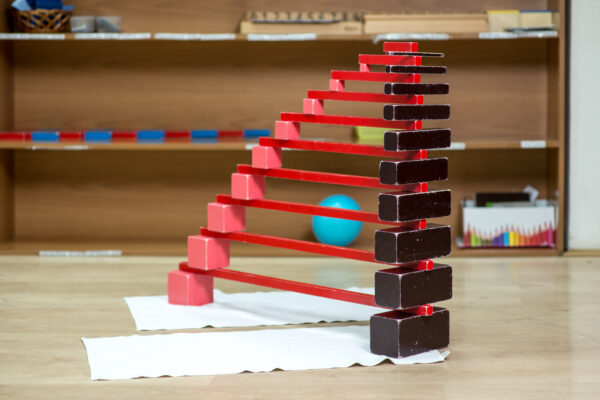
The proof of creativity in Montessori
As you can see, Montessori is not the boring, stuffy educational method some believe it to be. Creative thinking in Montessori is cultivated to its fullest extent, in fact.
The list of creative (and wildly successful) Montessorians is quite long and many argue that it serves as evidence that Montessori schools produce intelligent, motivated, and creative adults.
Here are just a handful of Montessori alumni you may be familiar with:
- Julia Childs
- Beyonce Knowles
- Gabriel Garcia Marquez
- Jeff Bezos
- Sean Combs
- Yo Yo Ma
The celebrity names were added just for fun. It's certainly not proof of anything, but it is very interesting to know that Montessori could be at least in part to thank for some of the talent and creativity we all benefit from.
How do you encourage your child's creative potential? Do you take the Montessori approach?
Cheers and don't forget to subscribe!
